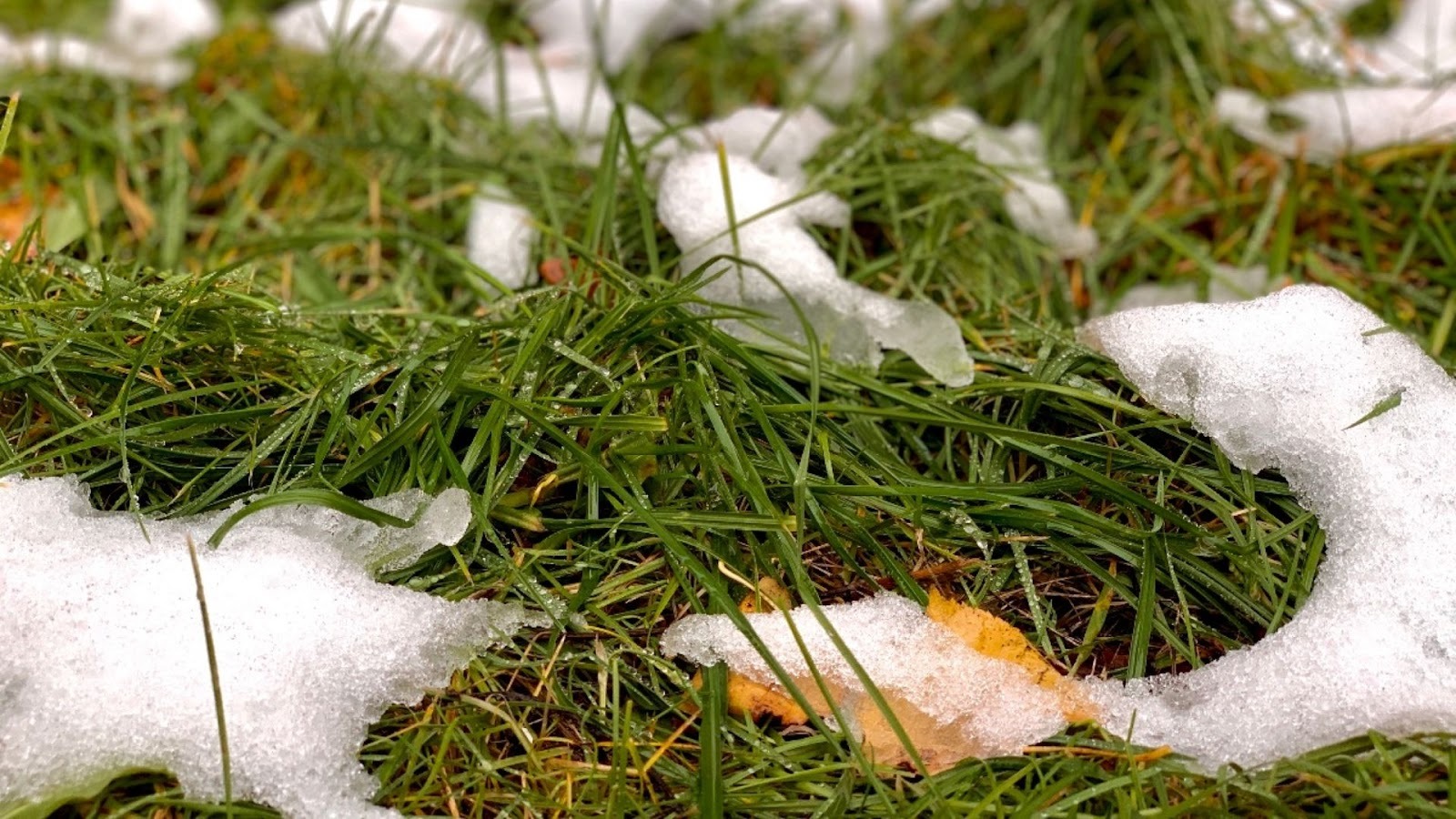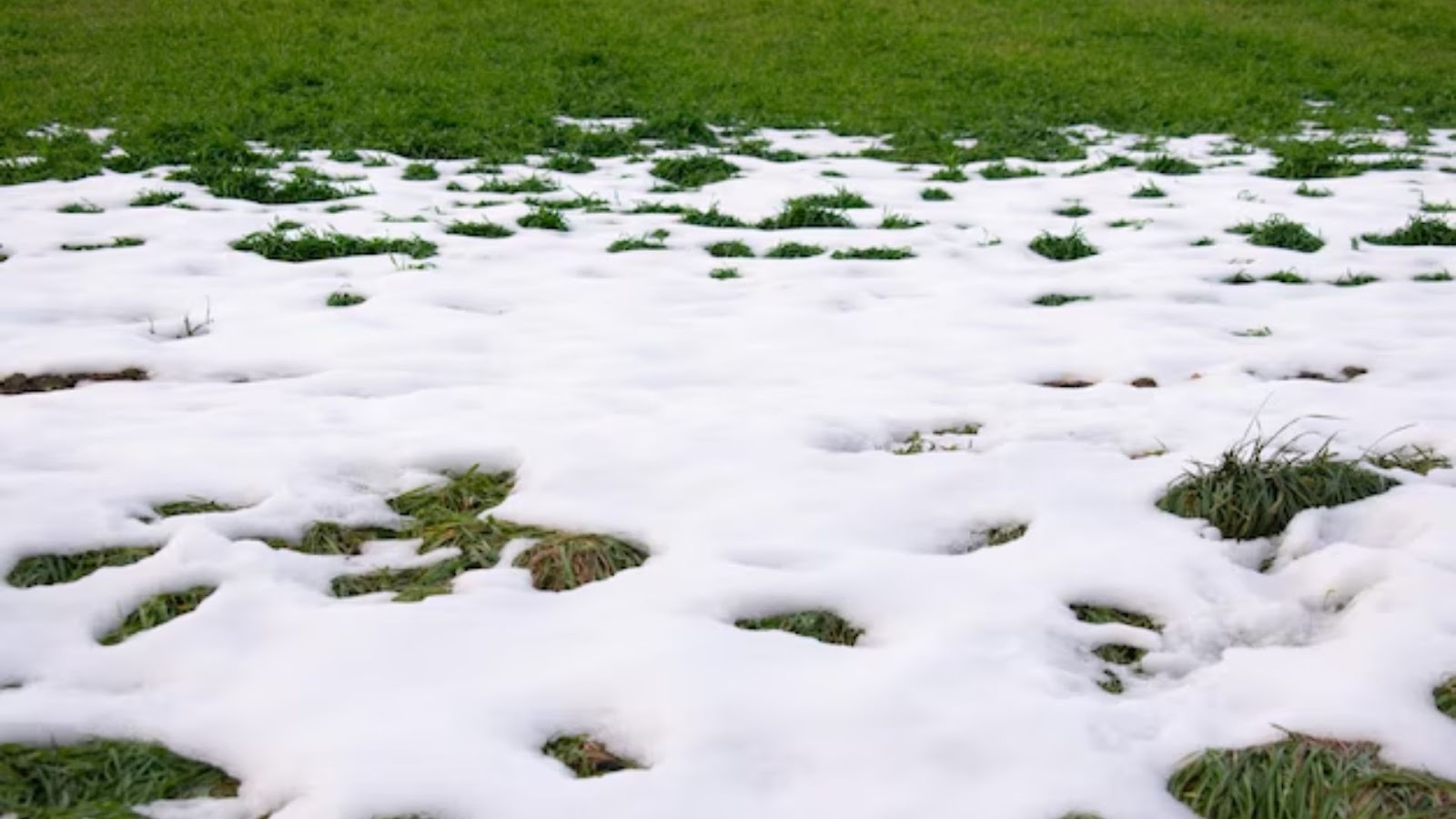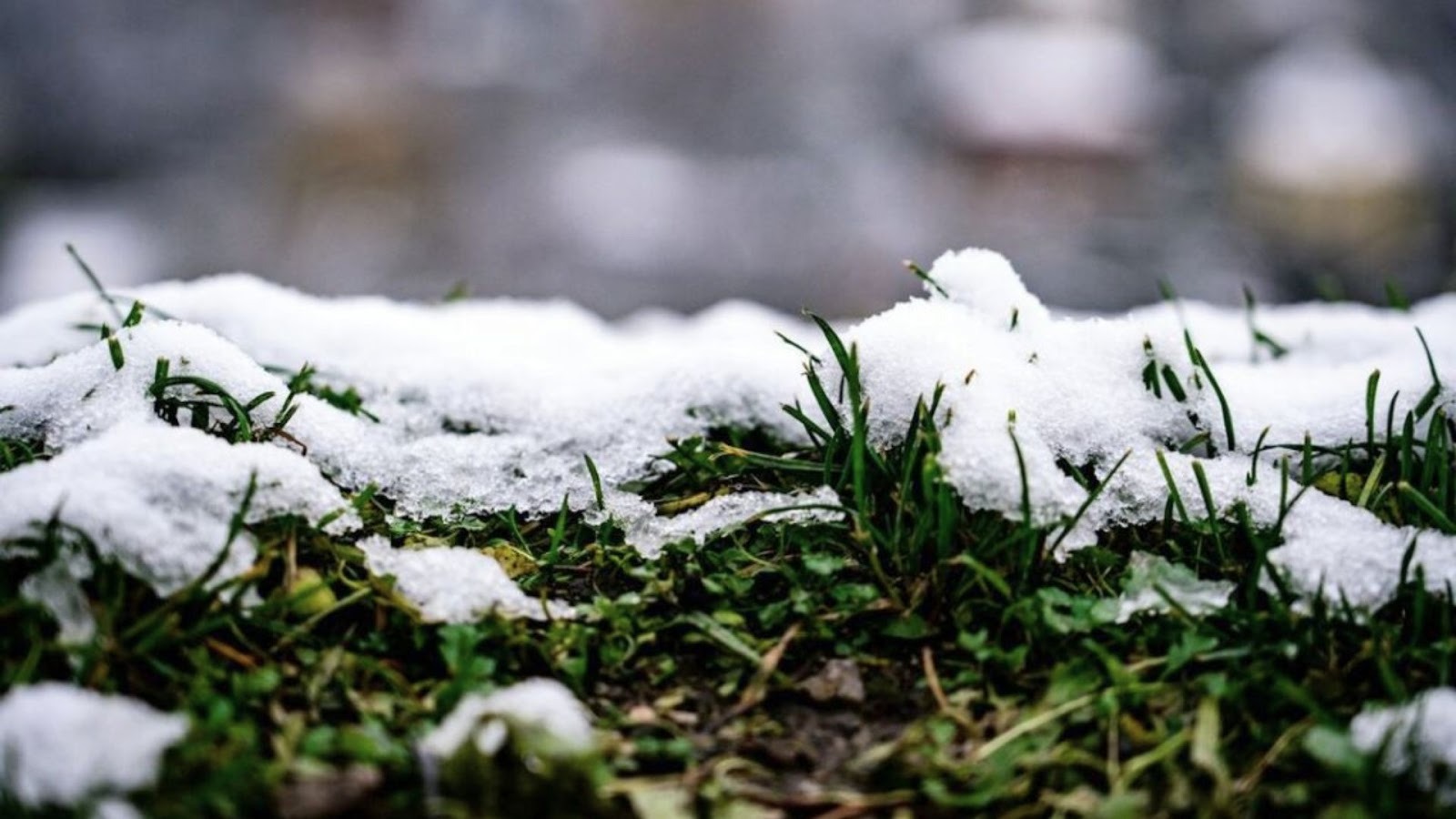Winter brings a beautiful blanket of snow, but as much as we love the scenery, heavy snow accumulation on your lawn can be a real challenge. Not only can it make outdoor spaces difficult to navigate, but improper snow removal or melting methods can damage your grass, soil, and even nearby plants. Understanding how to melt snow safely on your lawn ensures that you protect both your yard and your family while preparing for the warmer months ahead.
In this guide, we’ll explore effective and safe ways of how to melt snow on grass without harming your lawn. From natural solutions to environmentally friendly products, you’ll learn practical tips that keep your grass healthy, prevent ice buildup, and make your yard more accessible, all while avoiding common mistakes that could lead to long-term damage.
Before exploring safe snow-melting methods, it’s important to understand how common de-icing products can impact your lawn and garden. While effective at removing ice, these chemicals can have unintended consequences for soil and plant health.
Let’s look at the details:
Understanding these risks helps you make more intelligent choices when protecting your lawn from winter snow and ice. Next, we’ll explore safe alternatives that keep your grass and plants healthy while melting snow effectively.

Winter safety doesn’t have to come at the expense of a healthy lawn. With the right approach, you can keep your walkways clear, protect your plants, and set your yard up for a beautiful spring.
Let’s explore safe ice melt options, eco-friendly alternatives, and simple lawn care practices that make winter a little easier on your lawn.
Not all ice melts are created equal. Some are gentle on your plants and concrete, while others can do more harm than good.
Here are some safe choices:
For those who want to protect their lawn and the environment, there are plenty of natural ice-melting options that work just as well as chemical products. Choosing eco-friendly alternatives helps keep your grass healthy, prevents soil damage, and reduces the risk of harming nearby plants and pets.
Let’s look at a few simple and effective options that keep walkways safe without the harsh effects of traditional de-icers.
Applying ice melt effectively is just as important as choosing the right product. Even safe or eco-friendly ice melts can harm your lawn if used incorrectly, so a little planning goes a long way.
In this section, we’ll cover simple strategies to maximize the effectiveness of ice melt while minimizing damage to your grass and soil. From timing your application to mixing with natural abrasives, these tips help you stay safe and eco-conscious all winter long.

Winter can be tough on your lawn, but a few simple precautions can help your grass survive the cold months and bounce back strong in spring. Proper care during this season prevents soil compaction, reduces chemical damage, and keeps your roots healthy.
Here we’ll cover practical steps to minimize winter stress on your lawn, from avoiding heavy snow piles to ensuring proper drainage and spring clean-up. These easy habits go a long way in keeping your lawn vibrant year-round.
Snow mold and other winter lawn fungi can quietly damage your grass while it’s covered by snow. Taking preventative steps during and after winter helps keep your lawn healthy and reduces the need for chemical treatments later.
Snow mold is sneaky, but a few simple steps can help:

As winter fades, your lawn needs a little extra care to bounce back and thrive in the warmer months. Early spring preparation helps repair winter damage, promote healthy growth, and ensure a lush, even lawn for the season ahead.
Here we’ll cover simple steps to refresh your yard, from clearing debris and aerating the soil to overseeding bare patches, so your lawn comes back strong, green, and ready for summer.When winter finally loosens its grip, give your lawn a head start:
Winter lawn care can feel overwhelming, from selecting the right ice melt to preventing snow mold and preparing for spring growth. That’s where the experts at PercyLawn step in. With personalized guidance and professional services, they help keep your lawn healthy, strong, and vibrant throughout the year. Whether it’s recommending eco-friendly ice melts, safely applying treatments, or assisting with spring cleanup and overseeding, PercyLawn ensures your grass thrives no matter the season.
We offer a wide range of services to keep your yard healthy and beautiful year-round:
With their experience and attention to detail, you can enjoy a beautiful lawn without the stress of DIY guesswork. Don’t wait to give your yard the care it deserves. Contact PercyLawn today to schedule a consultation and start transforming your outdoor space into a lush, resilient landscape.
Winter lawn care doesn’t have to be stressful. From choosing safe ice melts and eco-friendly alternatives to properly applying them, preventing snow mold, and preparing your lawn for spring, each step plays a key role in maintaining a healthy, vibrant yard. Proper seasonal maintenance, combined with strategies like aeration, overseeding, and gentle snow management, ensures your grass stays strong through the cold months and thrives when warmer weather arrives.
Take charge of your lawn’s health this winter! Start by implementing these tips, experiment with eco-friendly ice melts, and follow proper winter and spring maintenance practices. For expert guidance and professional care, PercyLawn is ready to help you achieve a lush, resilient lawn year-round. Don’t wait give your lawn the care it deserves today!
1. What is the safest ice melt for lawns?
The safest ice melts are those that are gentle on both plants and soil while still effective at clearing ice. Calcium Magnesium Acetate (CMA) is a top choice because it’s biodegradable and doesn’t harm grass, flowers, or soil structure. Eco-friendly blends, like Arctic Eco Green®, combine natural ingredients with anti-corrosive agents, making them another safe option. Using these products helps keep your lawn healthy throughout winter while still keeping walkways and driveways safe.
2. Can I use homemade solutions to melt ice?
Absolutely! Simple homemade mixtures are an effective and safe way to melt ice without exposing your grass or garden to harsh chemicals. A combination of water, dish soap, and rubbing alcohol works well to break down ice quickly. These DIY solutions are especially useful for small areas like sidewalks, patios, or steps, and they reduce chemical buildup in your soil. Just be mindful to apply them evenly and sparingly for best results.
3. How can I prevent snow mold on my lawn?
Snow mold can silently damage your grass under the snow if not addressed. Preventing it is easier than treating it later. Start by gently raking your lawn after snow melts to remove dead grass and excess moisture. Avoid piling heavy snow on grass, as compacted snow creates the perfect environment for mold. Using natural de-icers, like sand or coffee grounds, can reduce mold growth and add traction without harming your lawn. Regular winter maintenance goes a long way toward a healthy, mold-free lawn come spring.
4. When should I aerate my lawn?
The best time to aerate your lawn is early spring, right after the snow has melted and the soil is workable but not overly wet. Aeration loosens compacted soil, improves oxygen flow, and allows water and nutrients to reach the roots more effectively. This simple step strengthens your lawn’s root system, helping grass recover from winter stress and promoting a thicker, greener lawn as the weather warms.
5. When should I call PercyLawn for professional help?
You should consider calling PercyLawn whenever you notice persistent lawn issues that you can’t manage on your own. This includes poor soil quality, drainage problems, or recurring disease and pest issues. Additionally, seasonal maintenance like fertilization, overseeding, and professional winter prep can be handled efficiently by experts. PercyLawn’s team provides guidance and hands-on care to keep your lawn healthy, vibrant, and ready for every season—saving you time and reducing stress.